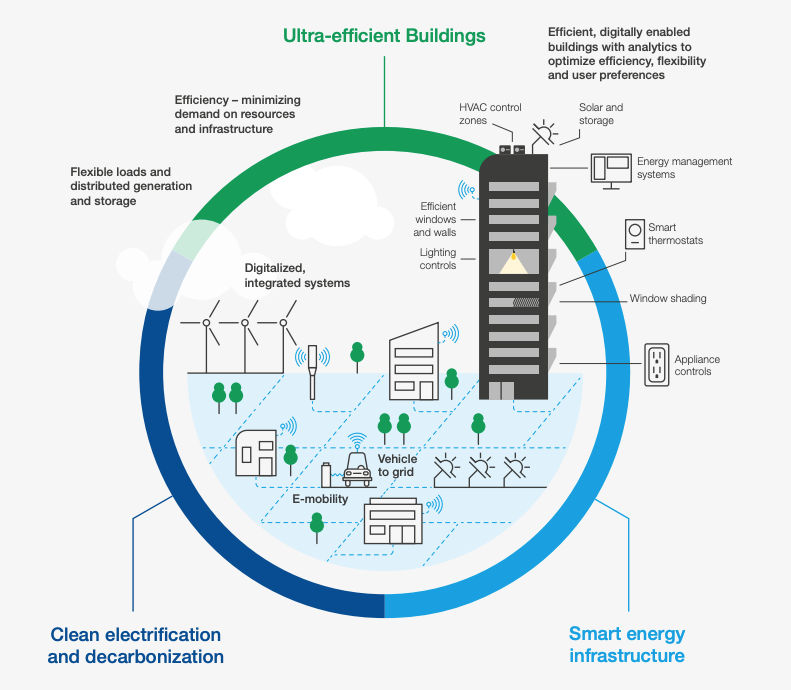Going underground? The innovations cleaning up freight transport

Underground pods for freight alleviate surface traffic congestion, reduce emissions and help ensure consistent delivery schedules.
Image: Unsplash/Julian Hochgesang
Stay up to date:
Travel and Tourism
Listen to the article
- Switzerland is building an underground network to transport freight that should be operational by 2031.
- Underground pods for freight alleviate surface traffic congestion, reduce emissions and help ensure consistent delivery schedules.
- As populations increase, transportation of people and goods needs to improve in tandem and the future of mobility is a key plank of the World Economic Forum’s work.
British punk rock band The Jam sang about “going underground” back in 1980 and, almost a decade before that, fictional children’s TV characters The Wombles created a subterranean network to collect and recycle human rubbish beneath London’s Wimbledon common.
Now, as populations grow around the world, the idea of going underground is once again moving back up the agenda.
Many of our most pressing economic and social development challenges are interlinked with transport, which accounts for about 64% of global oil consumption, 27% of all energy use, and 23% of the world’s energy-related carbon dioxide emissions, according to the International Institute for Sustainable Development. The future of mobility and transportation is a key plank of the World Economic Forum’s work to help businesses and policymakers develop smarter, cleaner and more inclusive practices.
In Switzerland, a company called Cargo Sous Terrain is building a vast underground network of tunnels for self-driving pods to transport freight across the country. The underground cargo system has a target date of 2031 and would reduce reliance on trucks.

The backbone of the Swiss system is a 490km tunnel. The first section runs from Härkingen to Zürich and is about 70km long.
The planet’s population is growing and the need for logistics is increasing lockstep, with transportation networks being stretched to their limits. Going underground could relieve the strain on our green spaces and help to reduce emissions.
Global transportation activity is expected to double by 2050, and that will boost emissions unless serious decarbonization plans are put in place.
What is the Forum doing to help cities to reach a net-zero carbon future?
At the same time, there’s increasing demand to move goods from one place to another and many of us now expect the speedy delivery of items to our homes. The global logistics industry had an approximate market size of $10.4 trillion in 2022 and is forecast to expand to $14.1 trillion by 2028, according to Statista.
Other forms of transportation are also being explored at the cutting-edge of technology. In Canada, fully electric FluxJet is a hybrid between an aircraft and a train, which also runs on fossil-fuel-free clean energy systems and so is far greener than many transport alternatives.
Accept our marketing cookies to access this content.
These cookies are currently disabled in your browser.
Billionaire Elon Musk was inspired to launch The Boring Company, an infrastructure and tunnel-building company, in late 2016 after getting stuck in traffic and thinking that going underground could save time and cut emissions.
“To solve the problem of soul-destroying traffic, roads must go 3D, which means either flying cars or tunnels are needed,” the Boring Company’s website says. “Unlike flying cars, tunnels are weatherproof, out of sight and won't fall on your head.”
Accept our marketing cookies to access this content.
These cookies are currently disabled in your browser.
Don't miss any update on this topic
Create a free account and access your personalized content collection with our latest publications and analyses.
License and Republishing
World Economic Forum articles may be republished in accordance with the Creative Commons Attribution-NonCommercial-NoDerivatives 4.0 International Public License, and in accordance with our Terms of Use.
The views expressed in this article are those of the author alone and not the World Economic Forum.
Related topics:
Forum Stories newsletter
Bringing you weekly curated insights and analysis on the global issues that matter.
More on Industries in DepthSee all
Giorgio Parolini
July 7, 2025
Ibrahim Odeh and Oliver Tsai
July 2, 2025
Erik Crouch
July 1, 2025
Francisco Betti
May 9, 2025








